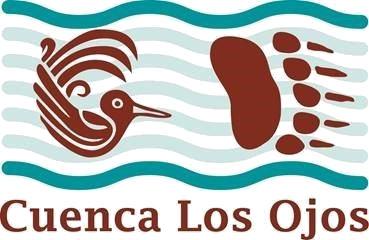Newsletter #4 - Final Days for the Yaqui Catfish?
Final Days for the Yaqui Catfish?
The Yaqui Catfish is at the top of the fish chain. His survival depends upon the system being intact and all the pieces and species under him being in place. That is why his survival is so precarious. He is therefore like the lion in mammals or the eagle in birds. Being on top he keeps the whole system in place. Lose him and the pieces begin to fall apart.
This catfish was once widespread in the Yaqui River Basin of Sonora and Chihuahua Mexico. Between 1989-1990 fisheries biologists from Arizona State University and personnel from the USFWSS made several trips into Mexico to get broodstock. They collected 100 fish and sent them to a hatchery in Dexter, New Mexico.
Several attempts were made to propagate, but the fish didn’t cooperate. In 1993, forty fish were sent to a hatchery in Uvalde, Texas. There the USFWS were successful in producing several broodstocks. Eventually, 1400 individuals were sent to ponds in Arizona, some to the El Coronado ranch and some to San Bernardino Wildlife Refuge. Unfortunately, the fish did not reproduce in the still water of ponds. We think only 3 fish are alive in the US today.
The good news is the Yaqui tribe and the governments of the US and Mexico have an interest in restoring the native catfish to its habitat in Mexico. Cuenca Los Ojos has a role to play because it manages 13,2 miles of the Cajon Bonito which is a breeding stream for the Yaqui catfish.
CLO will collaborate with the Yaqui tribe and US and Mexican agencies to protect the Cajon Bonito stream and support the increase of the Yaqui catfish population. In particular, Juan Bezaury of The Nature Conservancy in Mexico City is trying to get a designation from SEMARNAT for a fish preserve for the Cajon Bonito which will protect conditions of this stream in the future.
With your help, we can protect the breeding grounds of the endangered Yaqui Catfish.
Founder of CLO
If more information on the Yaqui Catfish is required, we invite you to explore an in-depth study on the fish survival written by Abarca et al. (1995): "Yaqui River fishes relevant to the Madrean province. US-Mexico collaborations (https://gallery.mailchimp.com/5e2ed93f6221e43d7bc763079/files/b6baff2c-52d1-4747-ad78-7117916db7f1/1995_Abarca_et_al_Yaqui_River_fishes_relevant_to_the_Madrean_province._US_Mexico_collaborations.pdf) " - Click Here to Read the Study > (https://gallery.mailchimp.com/5e2ed93f6221e43d7bc763079/files/b6baff2c-52d1-4747-ad78-7117916db7f1/1995_Abarca_et_al_Yaqui_River_fishes_relevant_to_the_Madrean_province._US_Mexico_collaborations.pdf)
Gila Minacae, Cajon Bonito © JC Rorabaugh Apr2017
Native Fishes Inhabiting CLO's Streams
Last year, GreaterGood (http://madreandiscovery.greatergood.org/) brought the Madrean Discovery Expedition to Cuenca Los Ojos’ lands. The following fishes have been encountered and photographed
Read More (https://cuencalosojos.org/blogs/news/the-madrean-discovery-expedition-at-cuenca-los-ojos)
Codoma Ornata, Punta del Agua © JC Rorabaugh Apr2017
¿Días finales para el bagre del Yaqui?
El bagre del Yaqui está en la cima de la cadena de peces. Su supervivencia depende de que el sistema esté intacto y todas las piezas y especies debajo de él estén en su lugar. Por eso su supervivencia es tan precaria. Él es por lo tanto como el León en mamíferos o el águila en pájaros. Estar en la parte superior mantiene todo el sistema en su lugar. Al perderlo las piezas empiezan a desmoronarse.
Este bagre fue tenia una amplia distribución en la cuenca del río Yaqui de Sonora y Chihuahua México. Entre 1989-1990 biólogos especialistas en peces de la Universidad Estatal de Arizona y personal de la del departamento de parques y vida silvestre de los Estados Unidos de Norte América (USFWS por sus siglas en inglés) hicieron varios viajes a México para obtener reproductores. Recolectaron 100 peces y los enviaron a un criadero en Dexter, Nuevo México.
Varios intentos fueron hechos para propagarse, pero los peces no cooperaron. En 1993, 40 peces fueron enviados a una incubadora en Uvalde, Texas. Allí el USFWS tuvo éxito en producir varios reproductores. Eventualmente, 1400 individuos fueron enviados a estanques en Arizona, algunos al Rancho El Coronado y algunos al refugio de vida silvestre de San Bernardino. Desafortunadamente, los peces no se reproducían en las aguas quietas o tranquilas de los estanques. Creemos que sólo 3 peces están vivos en los Estados Unidos de Norte America al día de hoy.
"Se va extinguiendo, y la extinción es para siempre "
- Chuck Minckley (https://www.researchgate.net/profile/Chuck_Minckley)
La buena noticia es que la Tribu Yaqui y los gobiernos de los Estados Unidos de Norte América y México tienen interés en restaurar el bagre nativo a su hábitat en México. Cuenca de los Ojos A.C. (CLO) tiene un papel que desempeñar porque maneja 21.2 kilómetros del arroyo conocido como Cajón Bonito que es una corriente de agua donde se reproduce de forma natural el bagre del Yaqui.
CLO colaborará con la tribu Yaqui y las agencias estadounidenses y mexicanas para proteger la corriente de cajón bonito y apoyar el aumento de la población de bagres Yaquis. En particular, Juan Bezaury de TNC Mexico nos esta apoyando para obtener de la SEMARNAT la designación del Cajón Bonito como refugio de peses para garantizar las condiciones del arroyo en el futuro.
Con su ayuda, podemos conservar al bagre del Yaqui.
======================================================
** (https://cuencalosojos.org/)









